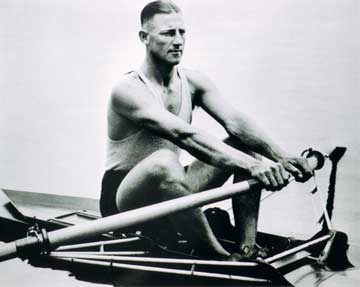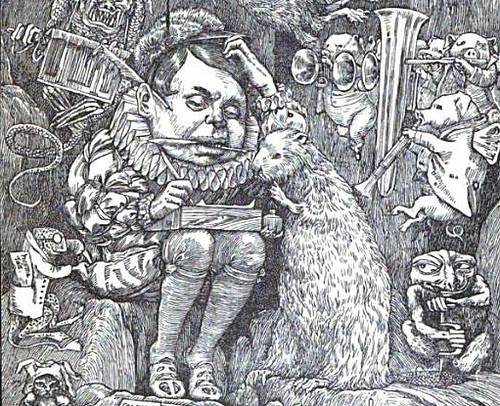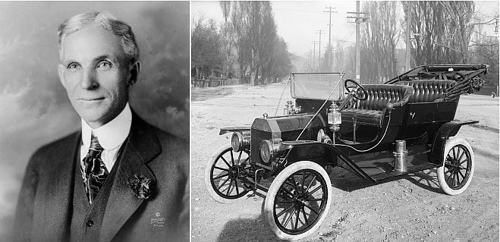qualtagh
n. the first person one meets after leaving the house
Right of Way

In the 1928 Olympics in Amsterdam, Australian rower Bobby Pearce was leading in the quarter-final when he looked ahead and saw a family of ducks crossing his lane.
He leaned immediately on his oars and let them pass. This let Frenchman Victor Saurin catch up and then pull away to a five-length lead.
But Pearce rocketed after him and won by 20 lengths — setting a new course record and making him a favorite with Dutch schoolchildren.
The Rich Are Different
Wanted–A professor to come twice a week to the house of a noble family in order to reform the pronunciation of a parrot.
— Advertisement, Paris Figaro, quoted in William Shepard Walsh, Handy-Book of Literary Curiosities, 1892
Short Subjects
While adapting The Big Sleep for the screen, a confused Howard Hawks wired Raymond Chandler asking who was supposed to have killed General Sternwood’s chauffer in the novel. Chandler responded:
NO IDEA
When a Paris news editor asked Ernest Hemingway for an accounting of his expenses, he cabled:
SUGGEST YOU UPSTICK BOOKS ASSWARDS
A movie studio once approached Eugene O’Neill to write a screenplay for a Jean Harlow film. They asked him to reply in a collect telegram of no more than 20 words. He wrote:
NO NO NO NO NO NO NO NO NO NO NO NO NO NO NO NO NO NO NO O’NEILL
When Samuel Beckett won the Nobel Prize in in 1969, he received a telegram from a Parisian named Georges Godot … apologizing for keeping him waiting.
Long Addition

In The Hunting of the Snark, the Butcher confirms for the Beaver that Two and One are Three:
Taking Three as the subject to reason about–
A convenient number to state–
We add Seven, and Ten, and then multiply out
By One Thousand diminished by Eight.
The result we proceed to divide, as you see,
By Nine Hundred and Ninety and Two:
Then subtract Seventeen, and the answer must be
Exactly and perfectly true.
Fittingly for Carroll, the math works:

Overkill
Poet/farmer Thomas Tusser composed his Five Hundred Points of Good Husbandry (1573) for the most part in rhyming couplets. But in Chapter 49 he gets ambitious, casting his conclusion in 94 consecutive words that begin with the letter T:
The thrifty that teacheth the thriving to thrive,
Teach timely to traverse, the thing that thou ‘trive,
Transferring thy toiling, to timeliness taught,
This teacheth thee temp’rance to temper thy thought.
Take Trusty (to trust to) that thinkest to thee,
That trustily thriftiness trowleth to thee.
Then temper thy travell, to tarry the tide,
This teacheth thee thriftiness, twenty times try’d.
Take thankfull thy talent, thank thankfully those,
That thriftily teacheth thy time to transpose.
Troth twice to be teached, teach twenty times ten,
This trade thou that takest, take thrift to thee then.
“Perhaps this was the most difficult chapter, according to its length, that our author had to compose,” writes editor William Mavor, “yet he has strained alliteration to the most extravagant pitch; for when he writes trive for contrive, and for the sake of the rhyme uses thee for thrive, we cannot help pitying the miserable expedients to which he was reduced, in order to accomplish his design.”
“In other respects the advice is good.”
Evaporated Milk
At the Mesa de Pavones, in the middle of the steppes of Caraccas, Mr. Bonpland and I saw cows suspended in the air. Distance one thousand toises. Measuring with the sextant, the breadth of the aërial interval, we found the animal’s feet elevated above the soil 3’20”. Simple suspension, no double image. I was assured, that horses had been seen, near Calabozo, suspended and inverted, without exhibiting any direct image.
— Mirage described in Alexander von Humboldt, Personal Narrative of Travels to the Equinoctial Regions of the New Continent, 1818
Managerese

Henry Ford told a visitor to the Ford Motor Company that there were exactly 4,719 parts in a finished car.
Impressed, the visitor asked the supervising engineer if this were true.
“I’m sure I don’t know,” said the engineer. “I can’t think of a more useless piece of information.”
Pen Mystique
Note from poet Thomas Bailey Aldrich to zoologist Edward S. Morse:
My dear Morse:
It was very pleasant to receive a letter from you the other day. Perhaps I should have found it pleasanter if I had been able to decipher it. I don’t think I mastered anything beyond the date, which I knew, and the signature, at which I guessed.
There is a singular and perpetual charm in a letter of yours — it never grows old, and it never loses its novelty. One can say every morning, as one looks at it, ‘Here’s a letter of Morse’s I haven’t read yet. I think I shall take another shy at it to-day, and maybe I shall be able in the course of a few years to make out what he means by those t’s that look like w’s and those i’s that haven’t any eyebrows.’
Other letters are read and thrown away and forgotten, but yours are kept forever–unread. One of them will last a reasonable man a lifetime.
Admiringly yours,
T.B. Aldrich
Mirror Twins
42263001 is a perfect square, and so is its reversal, 10036224.
